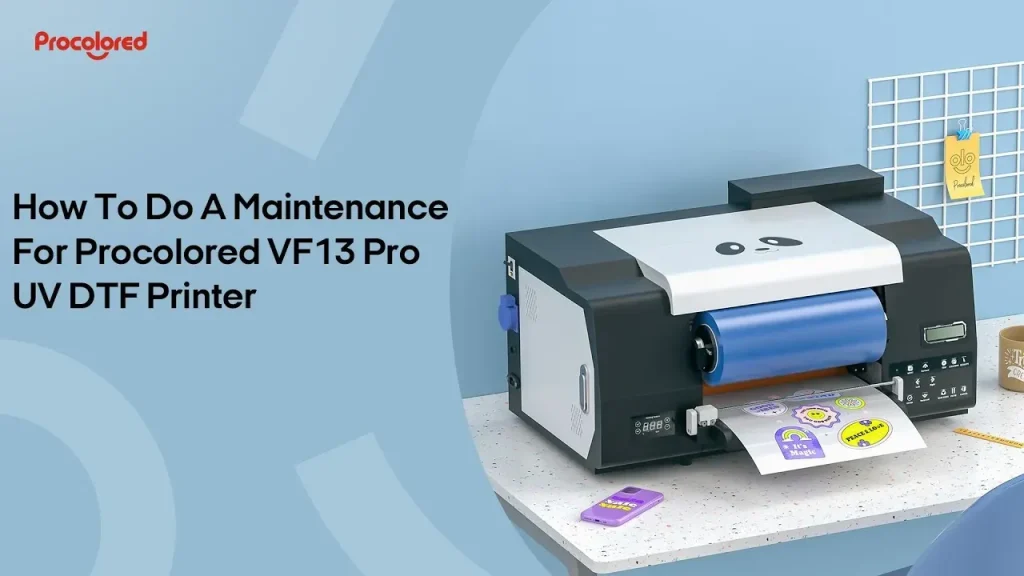UV DTF printer maintenance is a crucial aspect for anyone looking to achieve the highest quality prints and prolonged machine life. In today’s fast-paced printing industry, it is not enough to simply purchase a UV direct-to-film printer; you must also implement a regimen of care that includes regular cleaning, calibration of DTF printers, and adequate monitoring of environmental conditions. Essential DTF printing tips can elevate your print quality, while professional servicing of DTF printers ensures that your equipment remains in peak condition. By prioritizing the maintenance of your printer, you can avoid costly repairs and achieve consistently vibrant prints that exceed customer expectations. This comprehensive guide will uncover best practices in maintaining DTF printers, ensuring you can create stunning visuals without the worry of machine failure.
Proper upkeep of UV DTF printers, also known as direct-to-film printers, is vital for delivering exceptional print results. These advanced printing devices offer vibrant images and detailed outputs, but without suitable maintenance practices, their performance can significantly decline. Effective strategies such as regular cleaning, calibration procedures, and environmental monitoring contribute to the longevity and efficiency of your printing equipment. Engaging in methods to care for these direct-to-film printers helps streamline production processes while maintaining print quality. Whether referred to as UV DTF printers or simply DTF printers, the fundamental principles of maintenance remain the same.
Understanding UV DTF Printer Maintenance Best Practices
Effective maintenance of UV DTF printers encompasses a variety of practices aimed at preserving the quality of the machine and the prints it produces. One of the most critical aspects is maintaining a regular cleaning schedule, which involves daily cleaning of the print heads to prevent clogs and ensure smooth ink flow. Additionally, users should routinely inspect and maintain ink lines to avoid blockages that can detract from print consistency. Regular dusting around the printer area is also vital to keep contaminants at bay, ultimately contributing to improved print quality.
Beyond cleaning, proper calibration is fundamental for achieving vibrant and accurate colors. This means frequently adjusting the ink density settings to match the specific media used for printing. Users should also perform periodic test prints to ensure color alignment is correct, which helps to minimize color mismatches and defects in the final output. Investing time in calibration, alongside vigilant cleaning practices, empowers users to maintain their UV DTF printer at an optimal performance level.
Frequently Asked Questions
What are the best practices for maintaining UV DTF printers?
Maintaining UV DTF printers involves regular cleaning, proper calibration, and using quality materials. Daily cleaning of print heads, monitoring ink lines, and ensuring correct curing settings are vital to maintaining optimal performance. Additionally, keeping the printer in a controlled environment and scheduling professional servicing can significantly prolong its lifespan.
How often should I clean my UV DTF printer?
You should clean your UV DTF printer daily, especially the print heads, after each printing run. Regular surface cleaning and checking the ink lines for blockages also help maintain optimal performance and prevent print quality issues.
What is involved in the calibration of DTF printers?
Calibration of DTF printers involves adjusting the ink density settings and ensuring accurate color alignment for high-quality output. Running test prints regularly and adjusting curing settings according to the media used also form part of this essential maintenance practice.
Why is using quality materials important in UV DTF printer maintenance?
Using high-quality materials, such as specially designed films and compatible inks, is crucial for UV DTF printer maintenance. Poor-quality materials can lead to issues like peeling, poor adhesion, and fading of prints, ultimately affecting the longevity and quality of your printed products.
What environmental factors should be monitored for maintaining DTF printers?
Key environmental factors include temperature, humidity, and airflow. Keeping these within the recommended ranges helps prevent ink problems, such as viscosity inconsistencies or drying issues, ensuring optimal print quality in UV DTF printing.
When should I consider professional servicing for my DTF printer?
It is wise to schedule professional servicing for your DTF printer at least once a year. Qualified technicians can perform detailed inspections to catch issues not visible during routine maintenance and maintain a documented service history for better performance.
| Key Maintenance Practices for UV DTF Printers | Description | |
|---|---|---|
| Regular Cleaning | Includes daily head cleaning, ink line maintenance, and surface cleaning. | |
| Proper Calibration | Adjusting ink density and color alignment to ensure accurate prints. | |
| Use Quality Materials | Utilize high-quality films and inks for best printing results. | |
| Monitoring Environmental Conditions | Temperature and humidity control as well as managing airflow around the printer. | |
| Software Updates | Regularly check and update software to improve functionality. | |
| Professional Servicing | Schedule inspections by qualified technicians annually for best performance. | |
Summary
UV DTF printer maintenance is crucial for achieving excellent printing outcomes and extending the life of the machine. By regularly implementing cleaning techniques, calibrating settings, using high-quality materials, monitoring environmental conditions, ensuring software updates, and scheduling professional servicing, you ensure that your printer continues to operate at its peak performance. These maintenance practices help you avoid costly repairs and guarantee that every print meets high standards of quality. By prioritizing UV DTF printer maintenance, you foster an environment conducive to producing vibrant, enduring prints.



